Crowns, put simply, symbolise royalty, which in itself connects to power and influence. Artists, for many centuries, have depicted ruling monarchs in portrait scenes, normally giving off a theme of strength and confidence. Many artists have progressed their own careers based on their connections and perhaps a particular artwork of a ruling monarch. Many would have preferred to keep a greater independence in their careers, but soon realised that this was a shorter route to success and offered them an opportunity to perhaps take on personal projects, with their financial future secured. Basquiat studied traditional European art but would have felt a million miles away from the court painters of centuries ago. His inclusion of crowns was his attempt to connect his visual language with some of the art of old, whilst also playing with the concepts of power and influence.
Basquiat first made use of crowns within a homage to Picasso, titled Red Kings from 1981. The Spaniard himself had been influenced by African sculpture at times in his career, so it is intriguing to then witness Basquiat taking elements of Picasso’s work into his own. That said, the crown was never complementary to western culture in the way that he respected Picasso. He greatly despised the historic crimes of slavery and would use this symbol as an attempt to redress the artistic balance. He wanted to reinvent Afro-Caribbean figures as the new kings.
This summary of the meaning of the crown icon cannot be drilled down into anything more specific as he would vary its use from painting to painting, depending on the context of each piece. Whilst the general direction remained consistent, each painting and drawing held its own unique message, normally a variation on his common themes. From humble beginnings, Basquiat would have desired some of the inferred aspects enjoyed by a monarch, such as financial strength, influence and fame. He intended these crowns to become his own one day. We can argue that he did indeed achieve royalty status eventually, though only after his dramatic and untimely death.
Insecurities would have been an inevitable driver to Basquiat seeking to achieve these types of statuses. His upbringing was turbulent, and most mere mortals would have struggled from that point onwards. His raw creativity which produced this series of iconic symbols helped him to overcame a series of barriers that were imposed upon him by family circumstances as well as the society norms of the time. This ability to overcome has helped to inspire future generations of Afro-Caribbean artists as well as ensuring that their paths are at least a little easier to navigate.
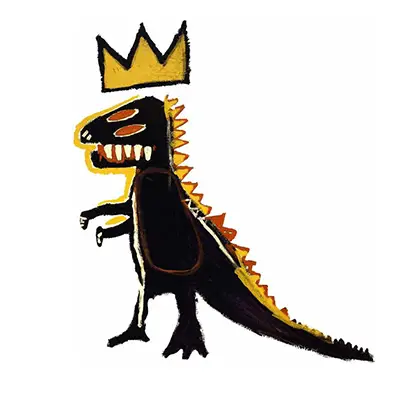
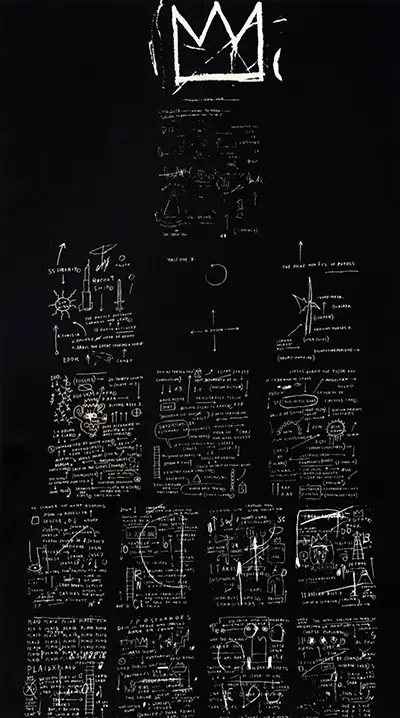
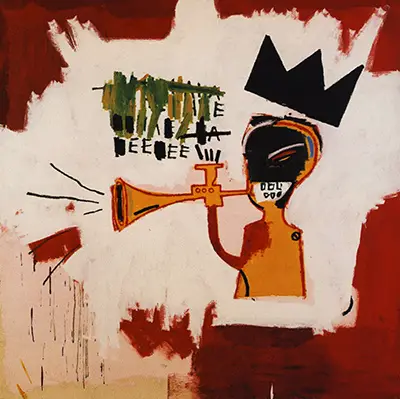
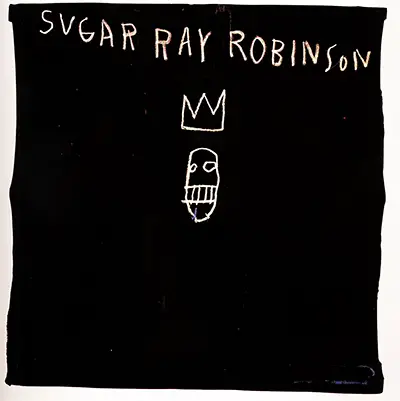
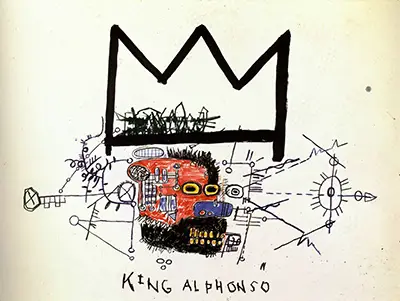
 Jean-Michel Basquiat.jpg)

